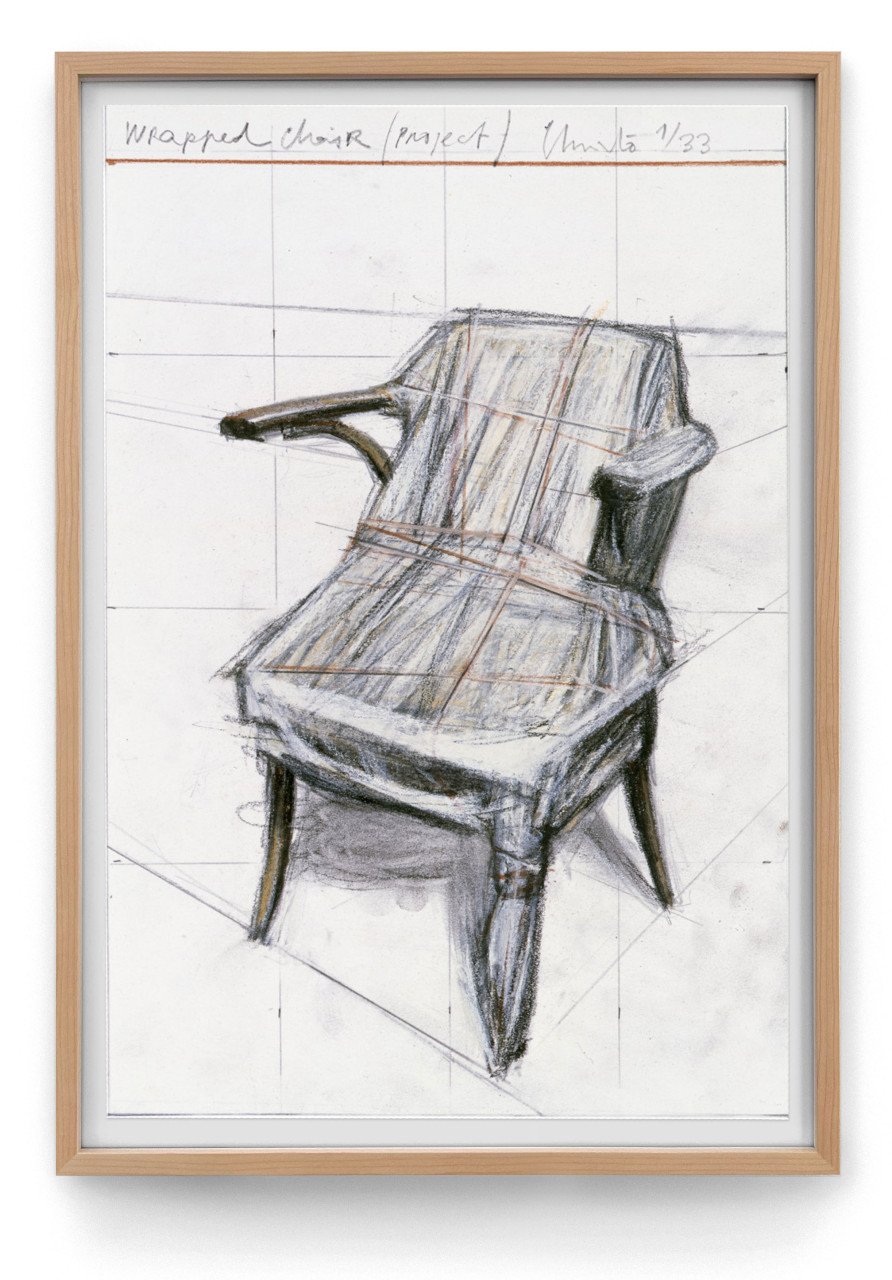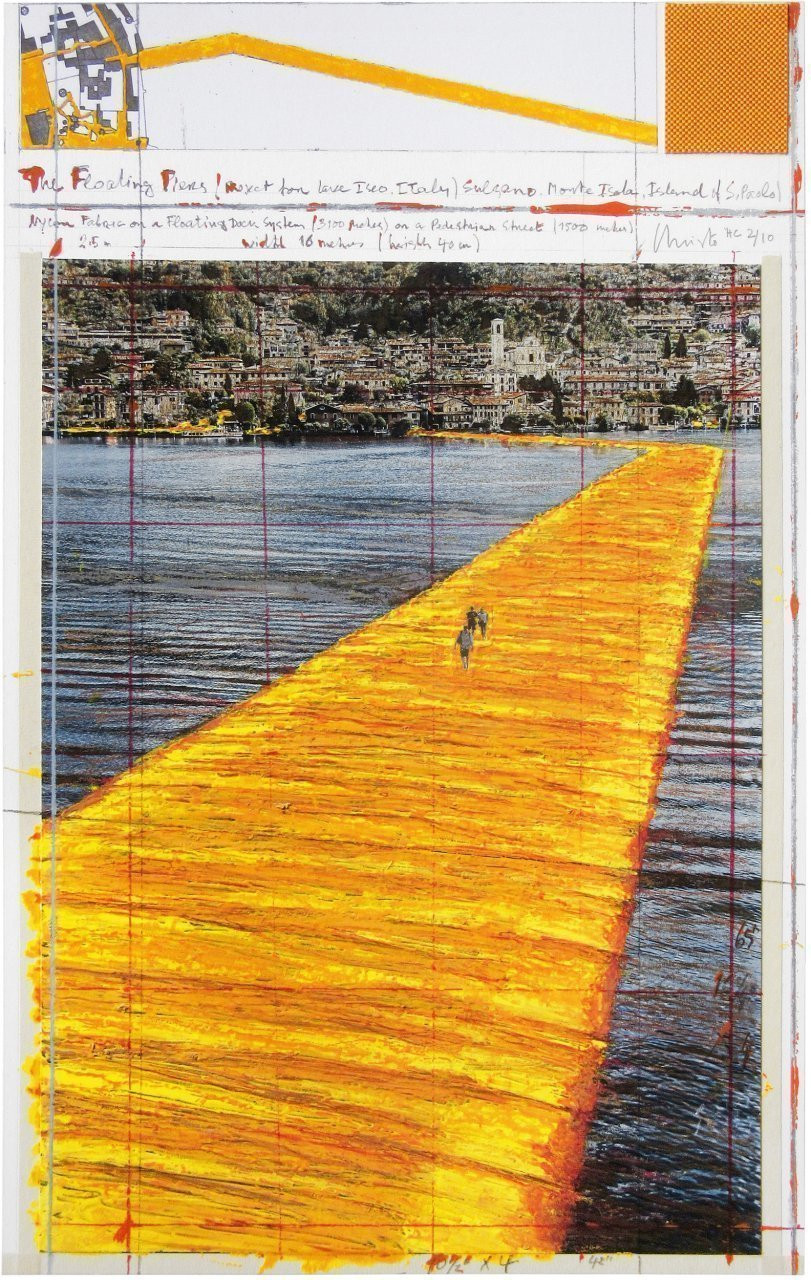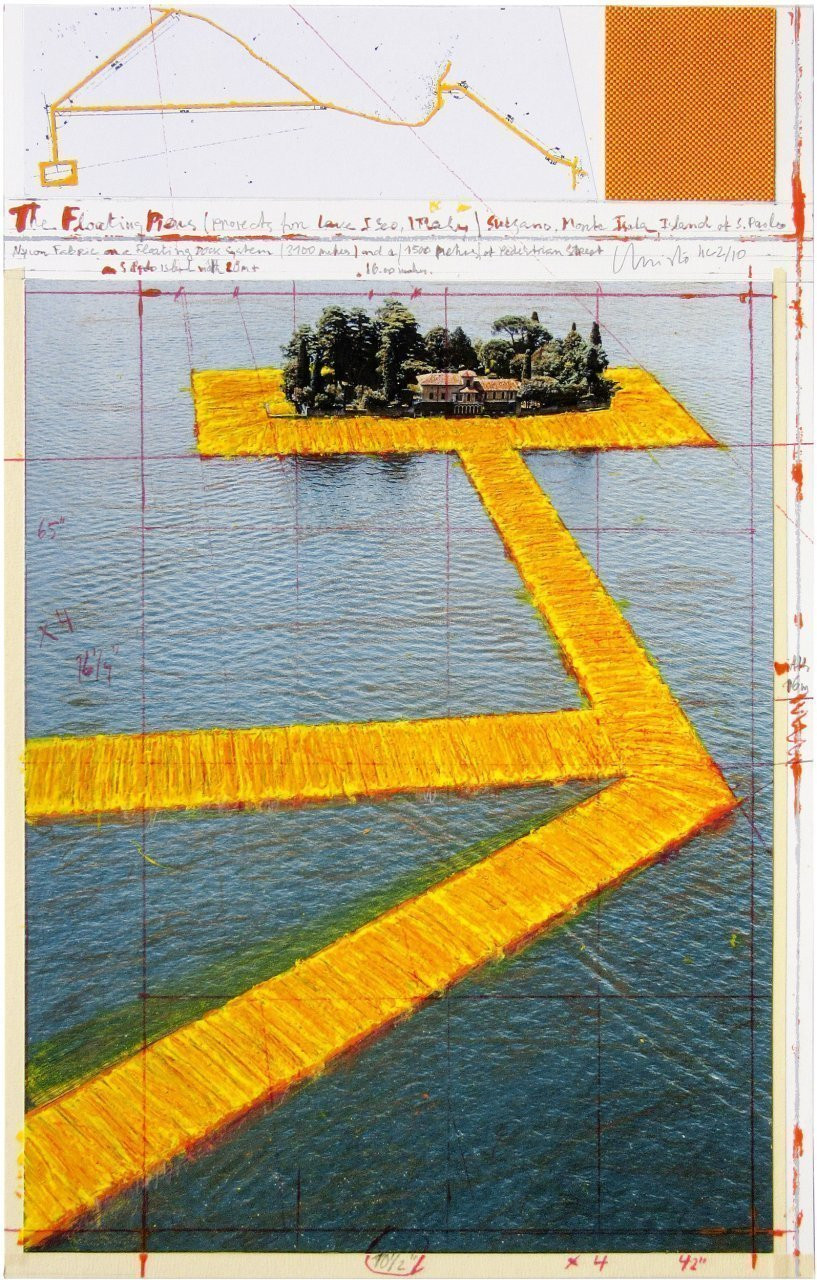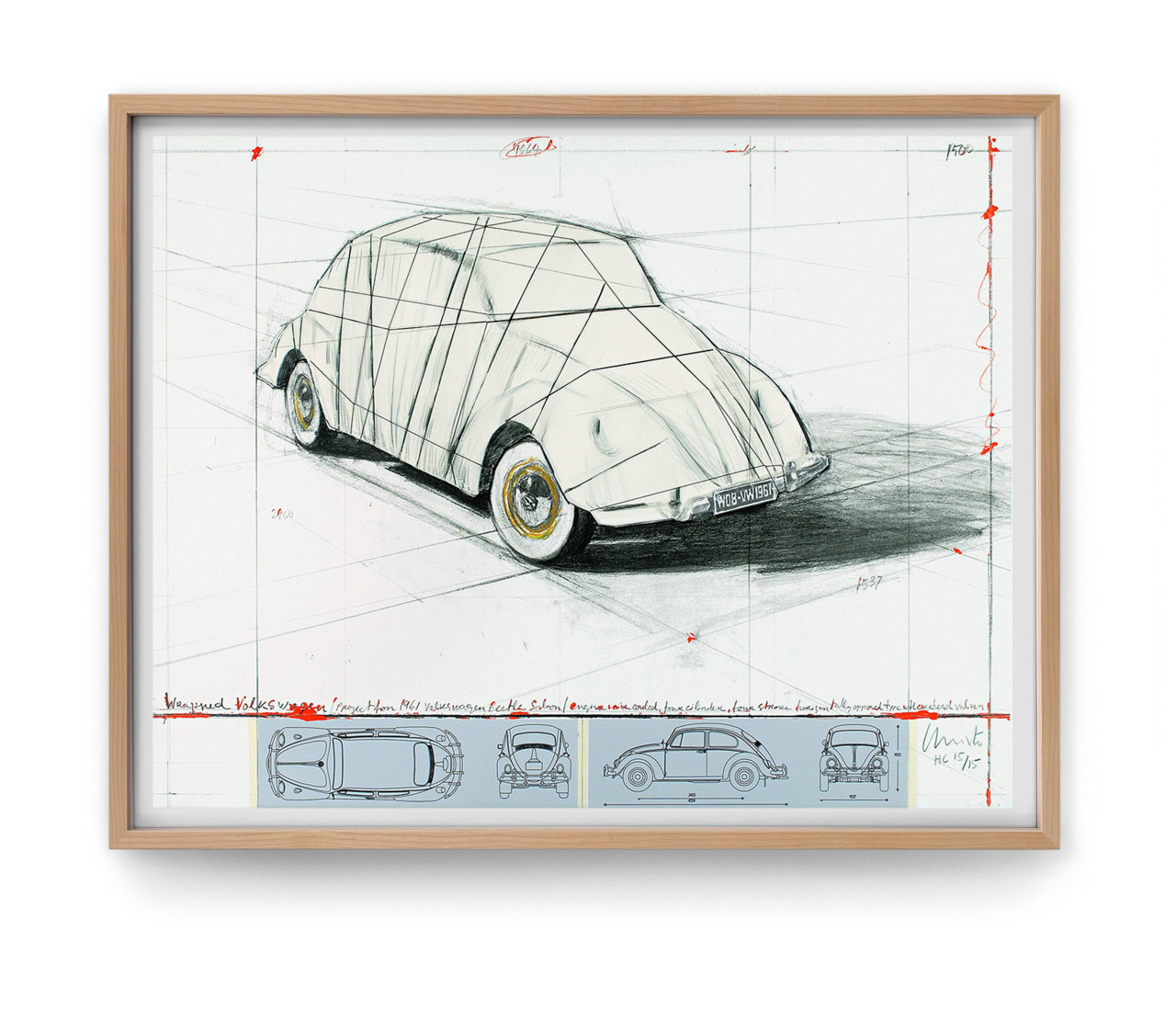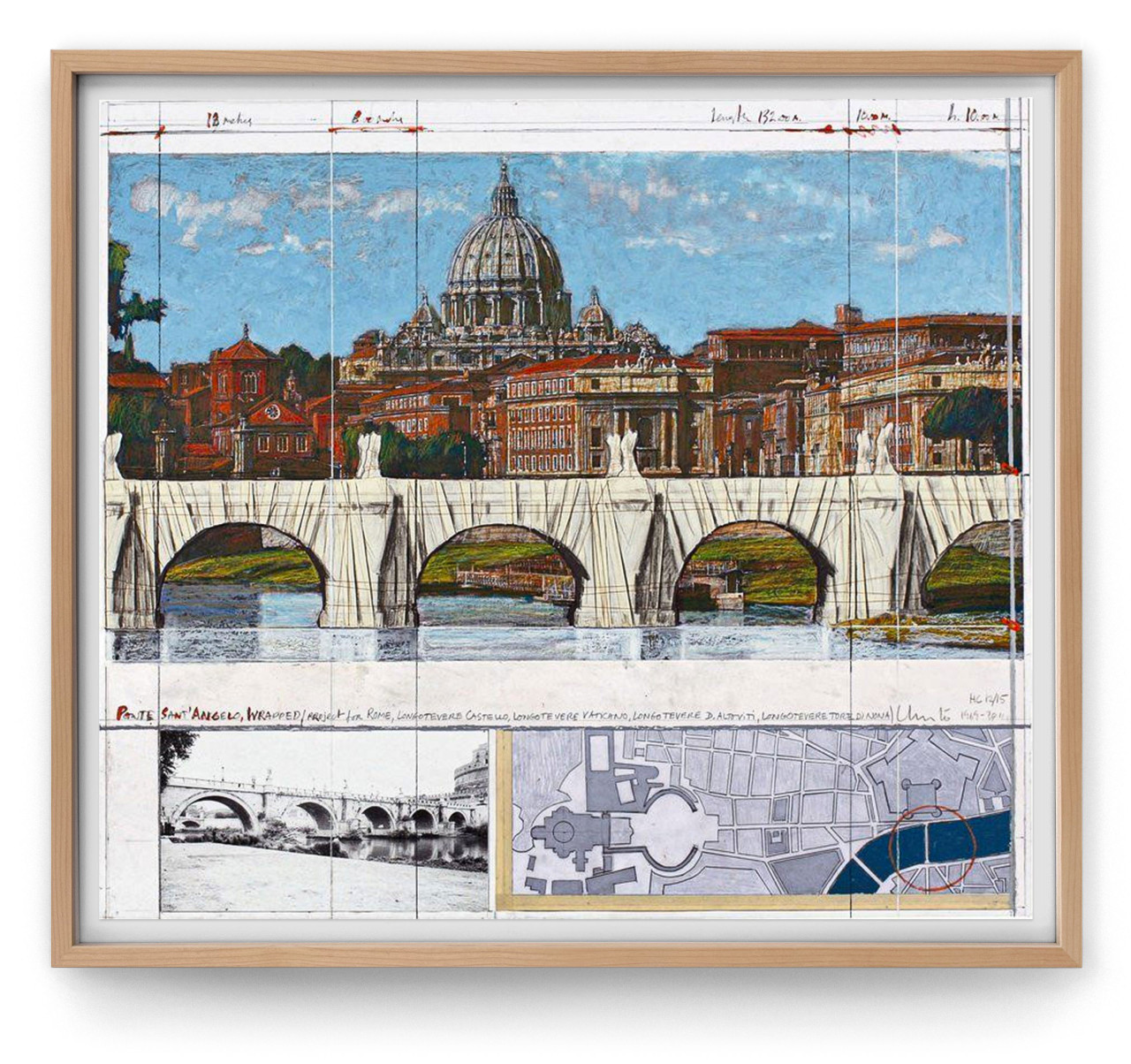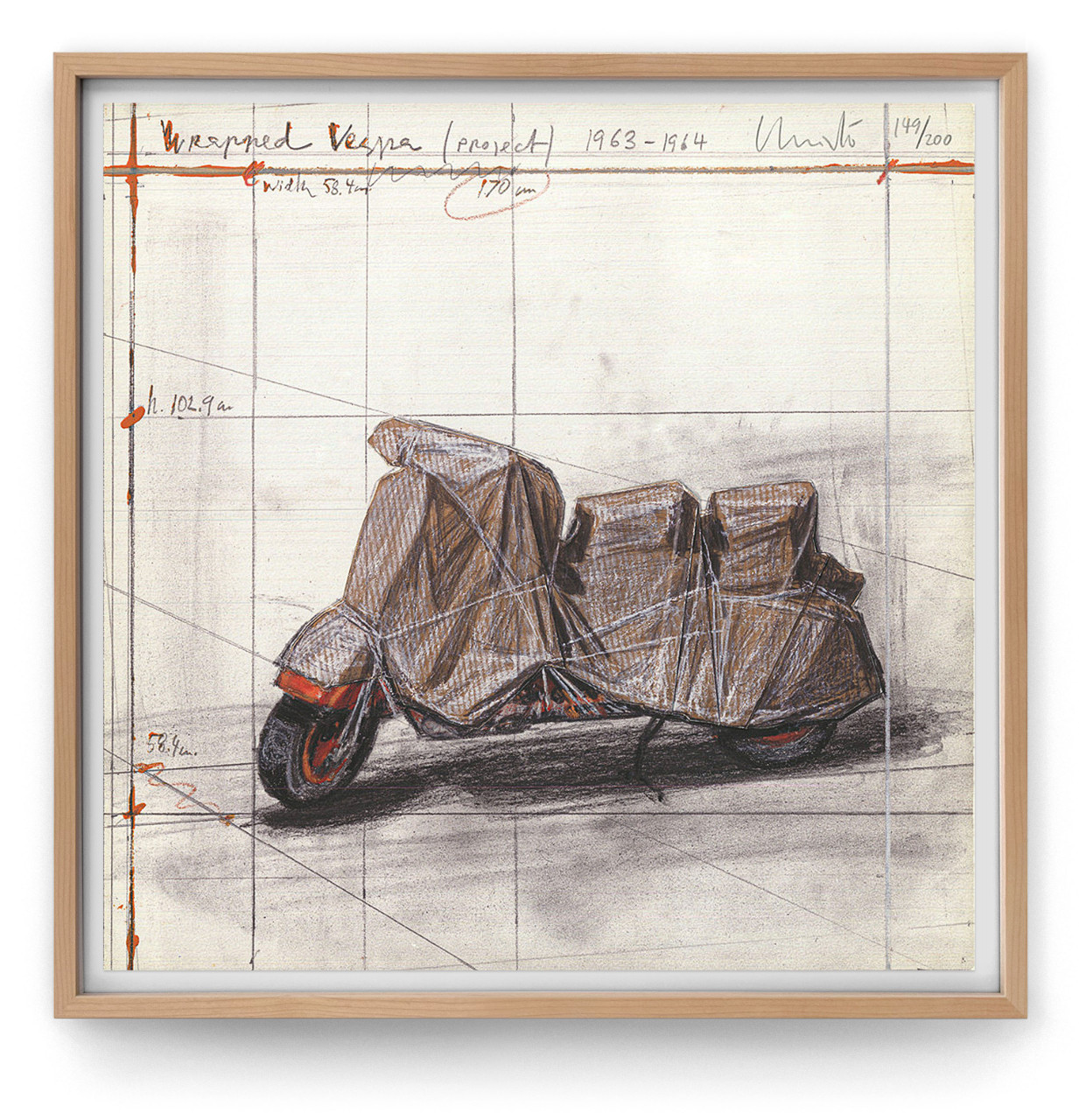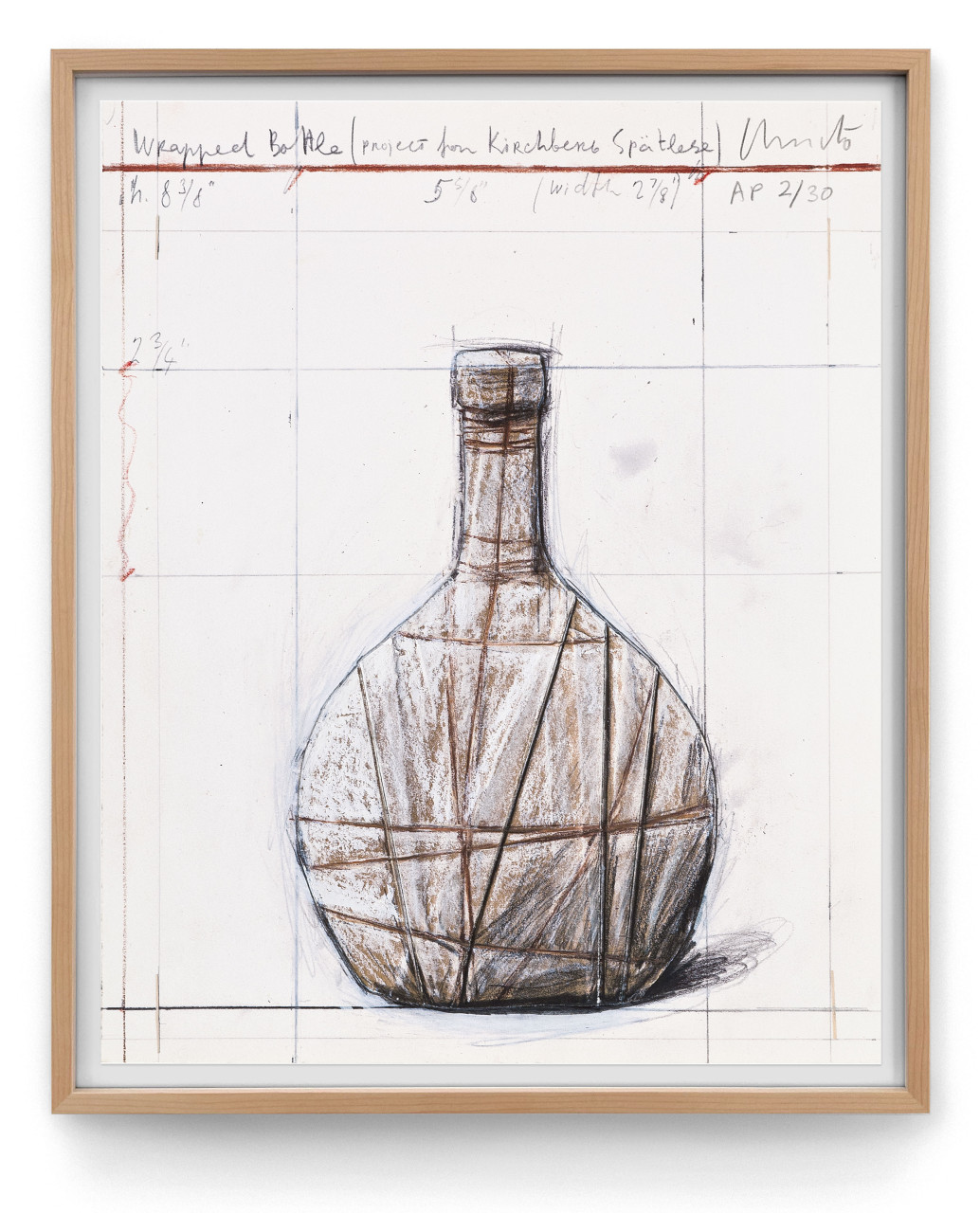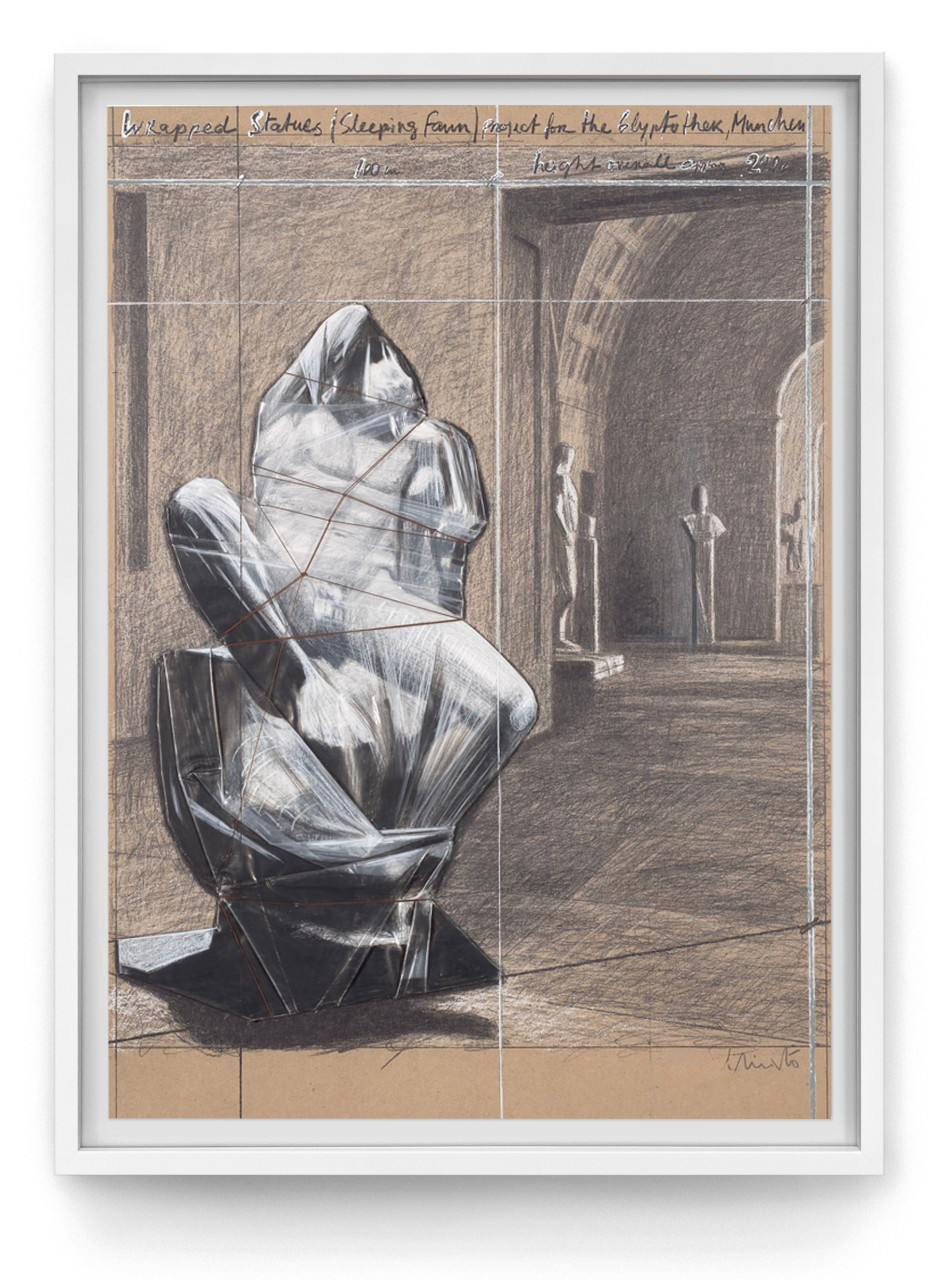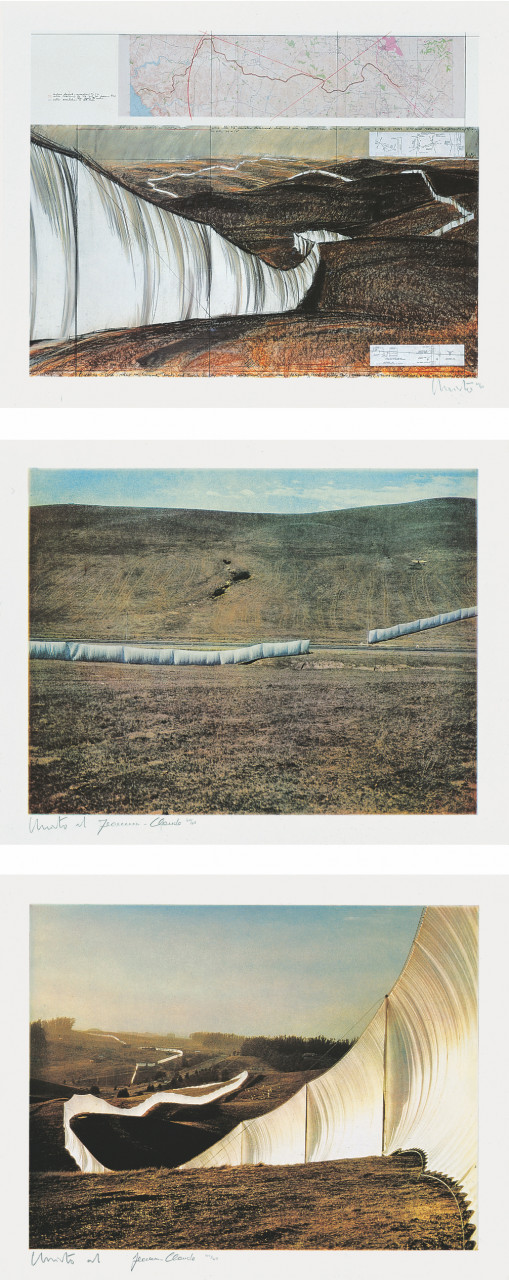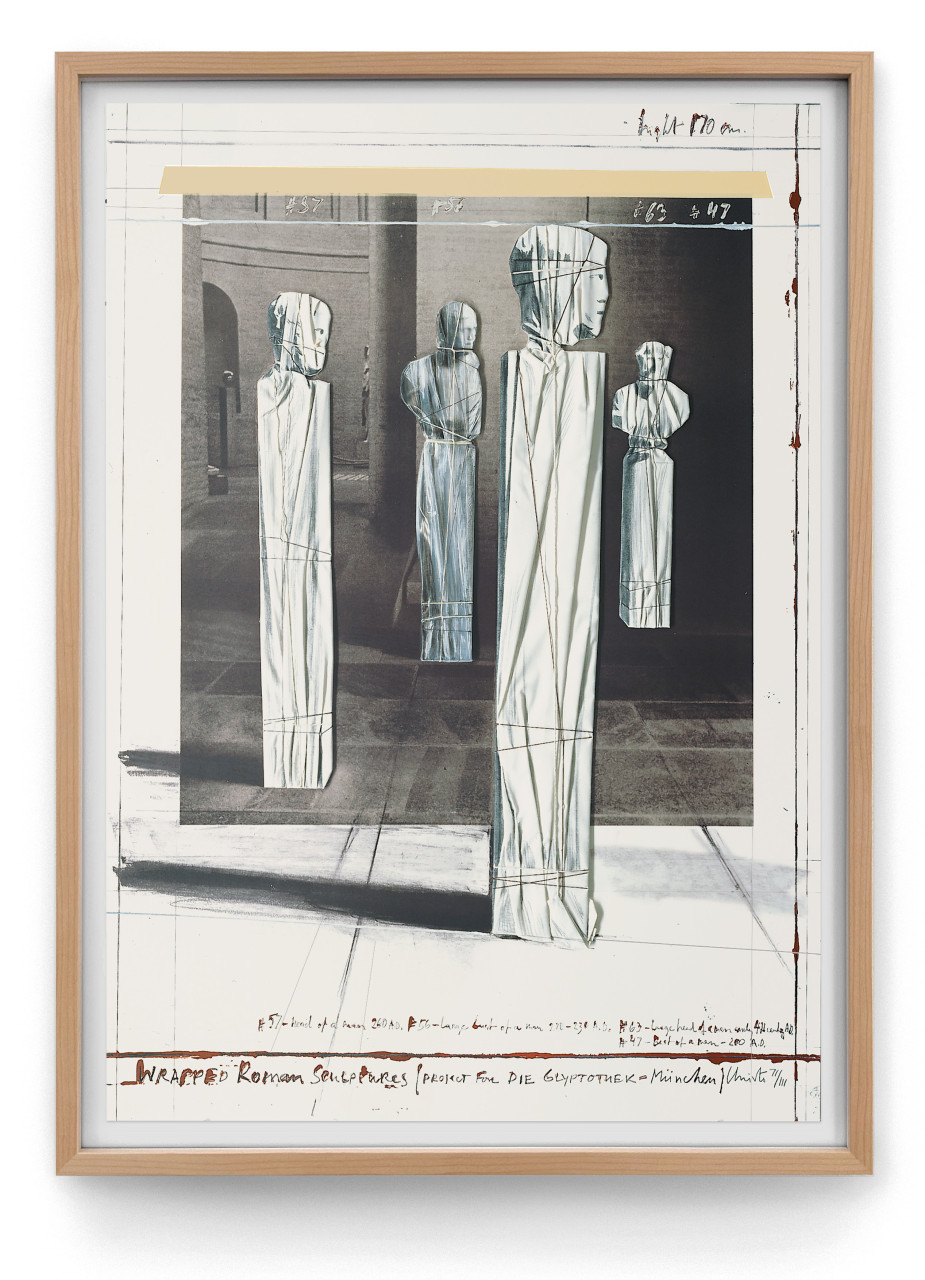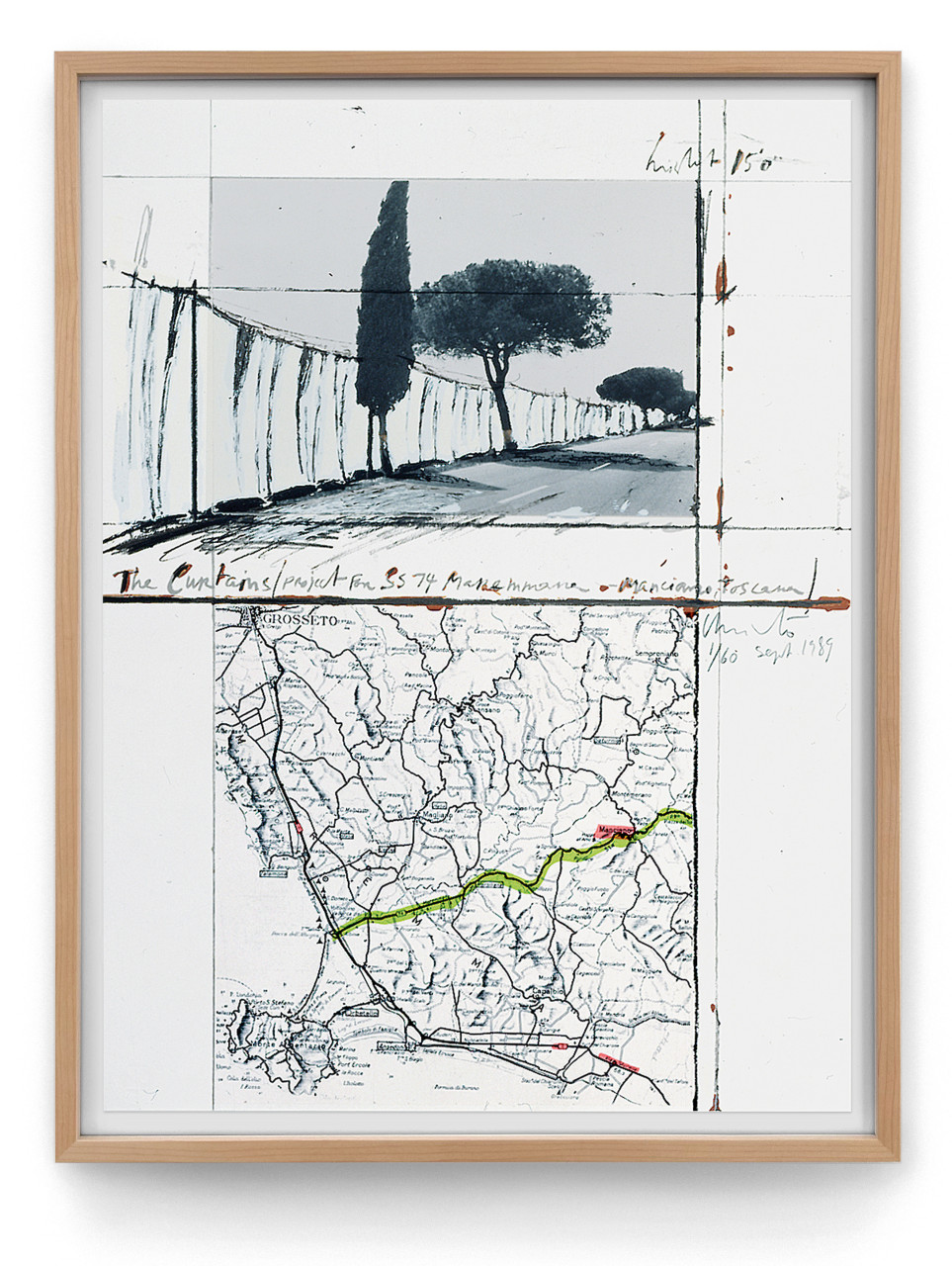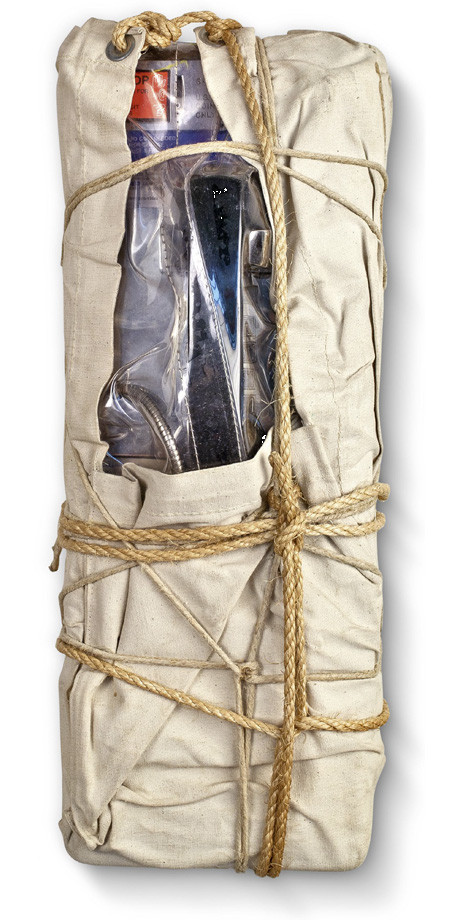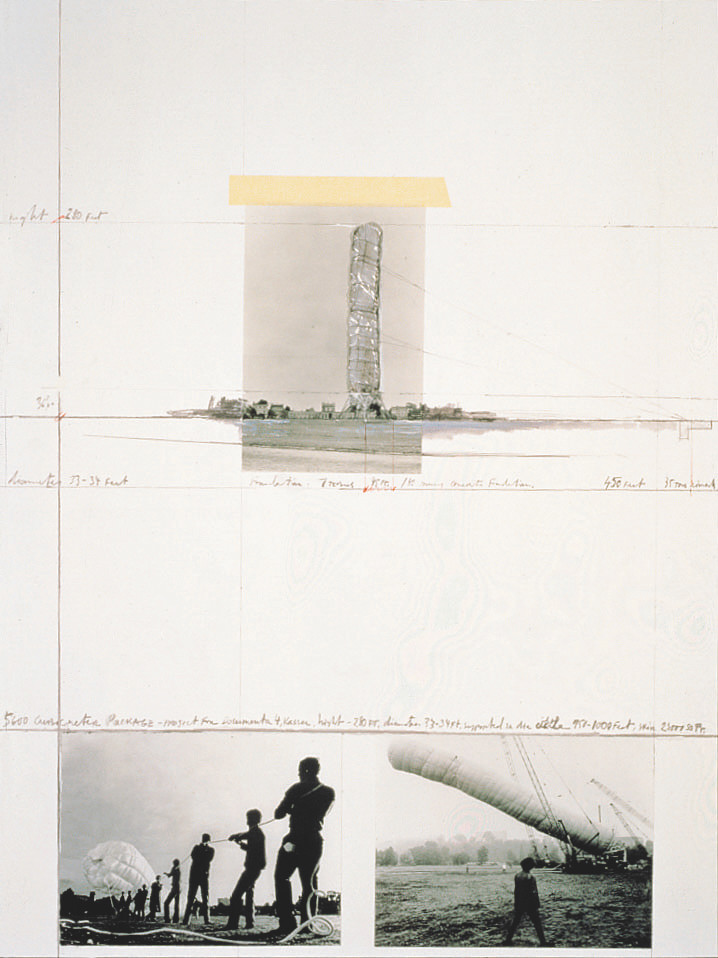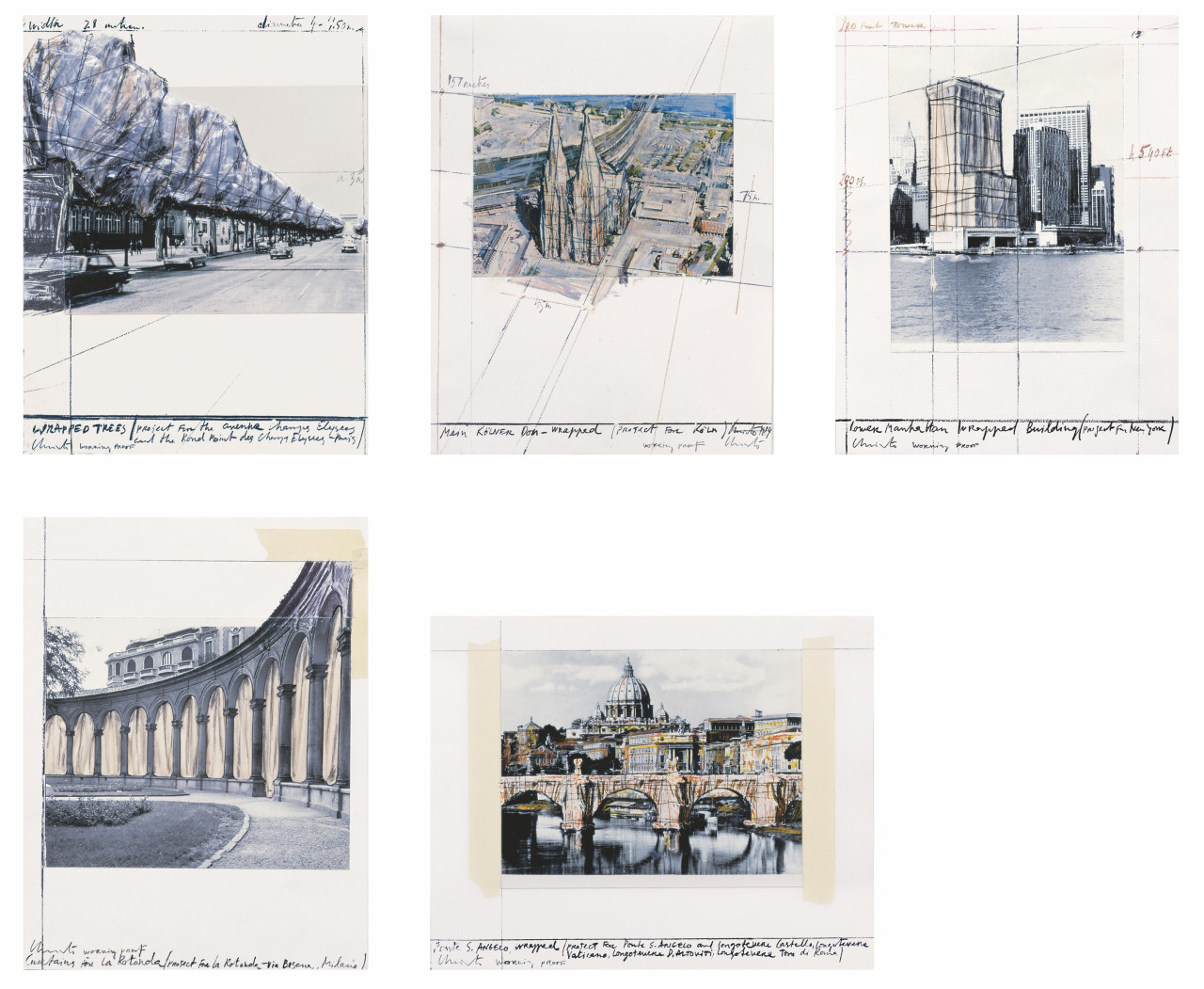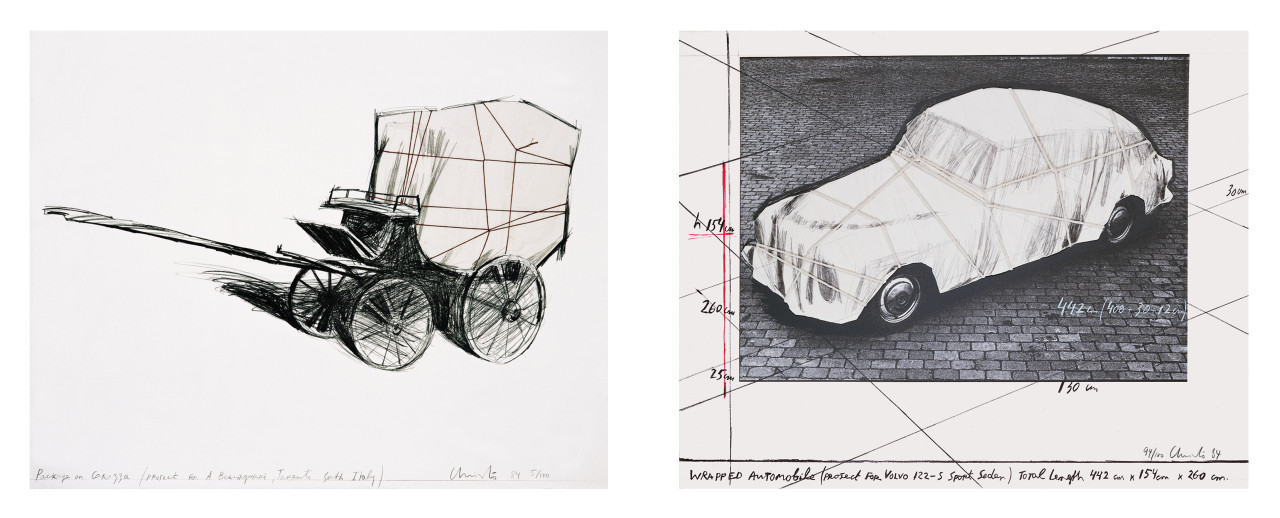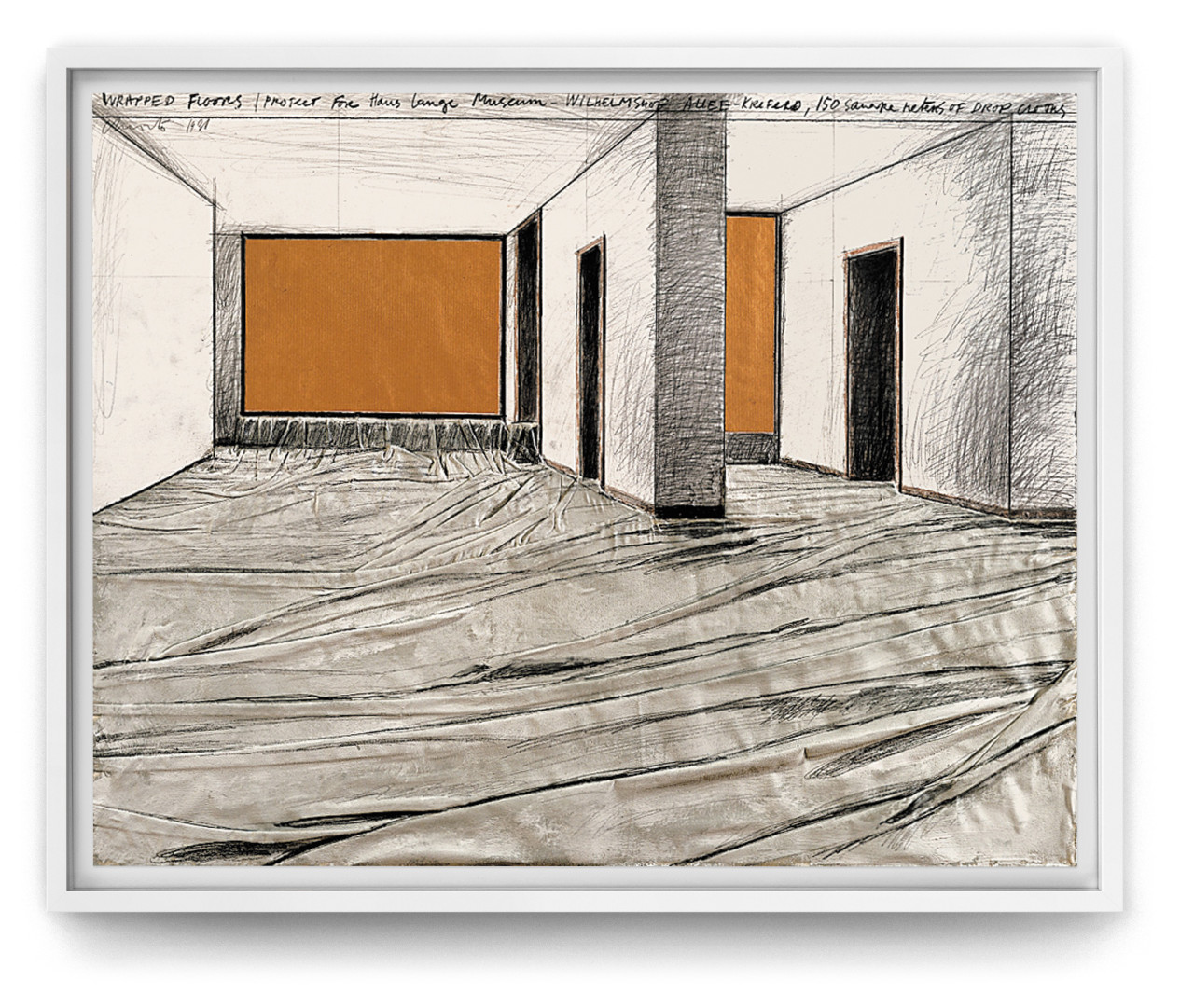Christo and Jeanne-Claude
Christo (1935-2020), born in Gabrovo, Bulgaria, and Jeanne-Claude (1935-2009), born in Casablanca, Morocco, lived and worked in New York. With their monumental site-specific environmental installations that were mounted in public sites around the world, Christo and Jeanne-Claude expanded the possibilities of artistic scale and dramatically – but temporarily – transformed familiar landscapes. These projects often required many years of planning and negotiation and were always financed through the sale of drawings, collages and print editions. Edition Schellmann worked closely with the artists for over 40 years, collaborating on numerous prints and editions and editing the catalogue raisonné Christo & Jeanne-Claude – Prints & Objects.
Christo and Jeanne-Claude Editions
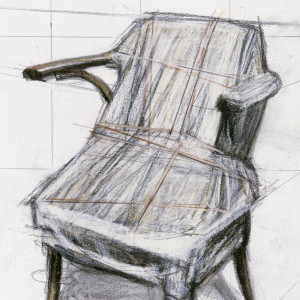
Wrapped Chair (Project)
1963/2019
-Sulzano_thumbnail-thumbnail-big.jpg)
The Floating Piers, Project for Lake Iseo, Italy – Sulzano
2017
-San-Paolo_thumbnail-thumbnail-big.jpg)
The Floating Piers, Project for Lake Iseo, Italy – San Paolo
2017
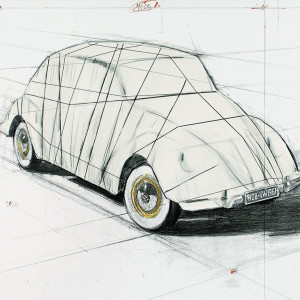
Wrapped Volkswagen, Project for 1961 Volkswagen Beetle Saloon
2013
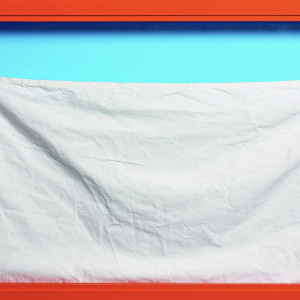
Show Window
2013
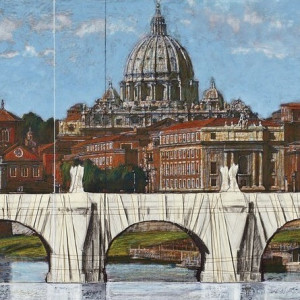
Ponte S. Angelo, Wrapped, Project for Rome
2011
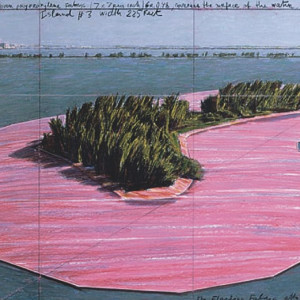
Surrounded Islands 1980-83
2009
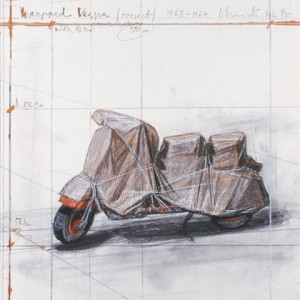
Wrapped Vespa
2009
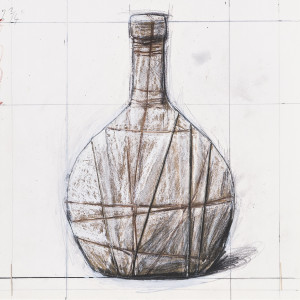
Wrapped Bottle, Project for Kirchberg Spätlese
2001/2007
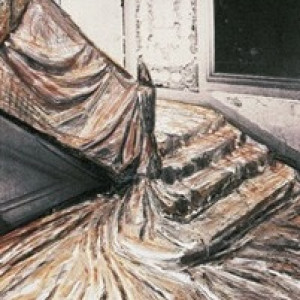
Wrapped Staircase, Project for Rue de Paradis, Paris
2001
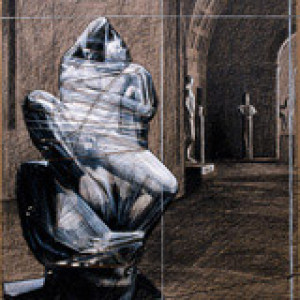
Wrapped Statues, Sleeping Faun, Project for the Glyptothek, Munich
2000
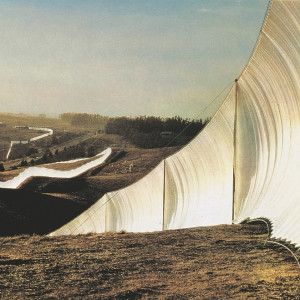
Running Fence, Sonoma and Marin Counties, California 1972-76
1998
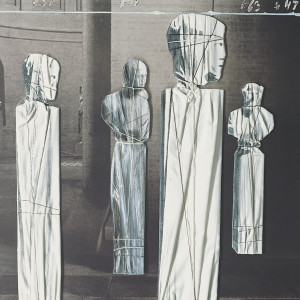
Wrapped Roman Sculptures
1991
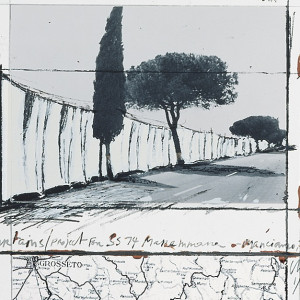
The Curtains Project for SS74 Maremmana, Manciano, Toscana
1989
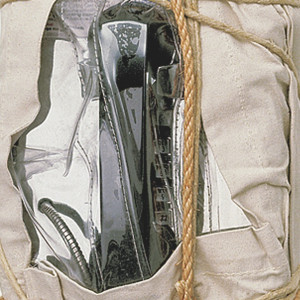
Wrapped Payphone
1988
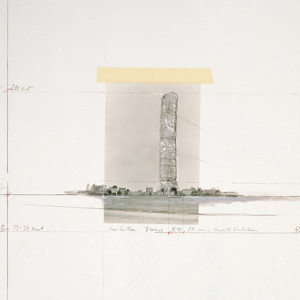
5600 m³ Package, Project for Documenta 4, Kassel
1986
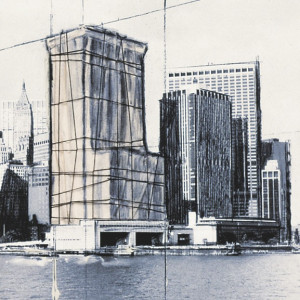
Five Urban Projects
1985
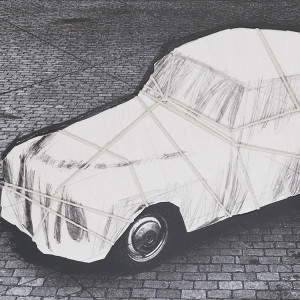
Package on Carozza, Wrapped Automobile (Volvo)
1984
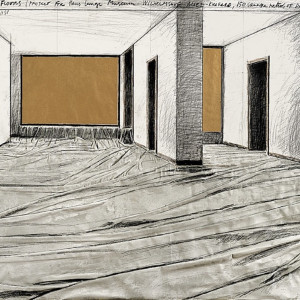
Wrapped Floors
1983
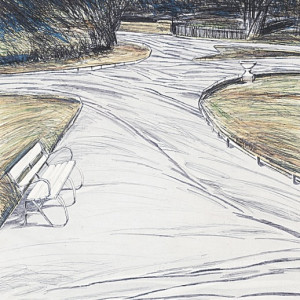
Wrapped Walk Ways
1983

Wrapped Coast, Little Bay, Australia, 1968-69
1975
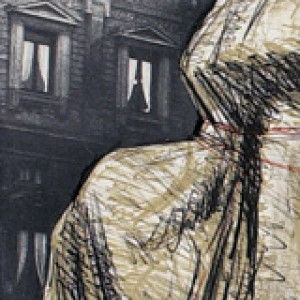
Wrapped Monument to Leonardo, Project for Piazza della Scala, Milan
1971
Wrapped Chair (Project)
1963/2019
Created on the occasion of the 200th anniversary of the furniture company Thonet.
Digital pigment print and silkscreen on Hahnemühle 300g Photo Rag Ultra Smooth Paper, 26.5 × 18 cm (10 x 7 in). Edition of 33, signed and numbered.
Having temporarily lived in Vienna in 1957, Christo had become familiar with Thonet furniture that was ubiquitous in the city at the time. In the 1960s and in accordance with the spirit of Nouveau Réalisme in Paris, he was intrigued by everyday objects and has wrapped numerous types of furniture.
EUR 6,000
The Floating Piers, Project for Lake Iseo, Italy – Sulzano
2017
Screenprint with collage of photograph, fabric, map and masking tape on 325g Hahnemühle Fineart Baryta paper, mounted on Römerturm museum board, 56 × 35.5 cm (22 × 14 in). Edition of 75 + 10 A.P. + 5 P.P. + 3 H.C., signed and numbered.
Christo created this collage edition the year after he had finally realized his project The Floating Piers on Lake Iseo in Italy – having first conceived it in 1970. For just over 2 weeks, 100,000 square meters (1 million square feet) of shimmering yellow fabric, carried by a modular floating dock system of 220,000 polyethylene cubes, undulated with the movement of the waves as The Floating Piers rose just above the water's surface. "Those who experienced The Floating Piers felt like they were walking on water – or perhaps the back of a whale," said Christo. "The light and water transformed the bright yellow fabric to shades of red and gold throughout the sixteen days."
EUR 35,000
The Floating Piers, Project for Lake Iseo, Italy – San Paolo
2017
Screenprint with collage of photograph, fabric, map and masking tape on 325g Hahnemühle Fineart Baryta paper, mounted on Römerturm museum board, 56 × 35.5 cm (22 × 14 in). Edition of 75 + 10 A.P. + 5 P.P. + 3 H.C., signed and numbered.
For this edition, Christo chose to bring into focus the part of The Floating Piers leading up to the island of San Paolo. He created this collage the year after he had finally realized The Floating Piers project on Lake Iseo in Italy – having first conceived it in 1970. For just over 2 weeks, 100,000 square meters (1 million square feet) of shimmering yellow fabric, carried by a modular floating dock system of 220,000 polyethylene cubes, undulated with the movement of the waves as The Floating Piers rose just above the water's surface. "Those who experienced The Floating Piers felt like they were walking on water – or perhaps the back of a whale," said Christo. "The light and water transformed the bright yellow fabric to shades of red and gold throughout the sixteen days."
EUR 35,000
Wrapped Volkswagen, Project for 1961 Volkswagen Beetle Saloon
2013
Screenprint with collage of fabric, polyethylene and twine, with felt pen and pencil additions, and photos with masking tape, 56 x 71 cm (22 x 28 in). Edition of 160 + XC + 50 AP + 15 HC + 8 PP, signed and numbered.
Christo has wrapped, or rather covered, objects of our daily lives. By veiling things, Christo aims to conceal the beauty and meaning of the underlying structure while simultaneously creating a new enigmatic beauty.
He had first wrapped a Volkswagen Beetle in 1961 in honor of the worldwide popular brand, a gesture that echoes the artistic ideas of Pop art and Nouveau réalisme.
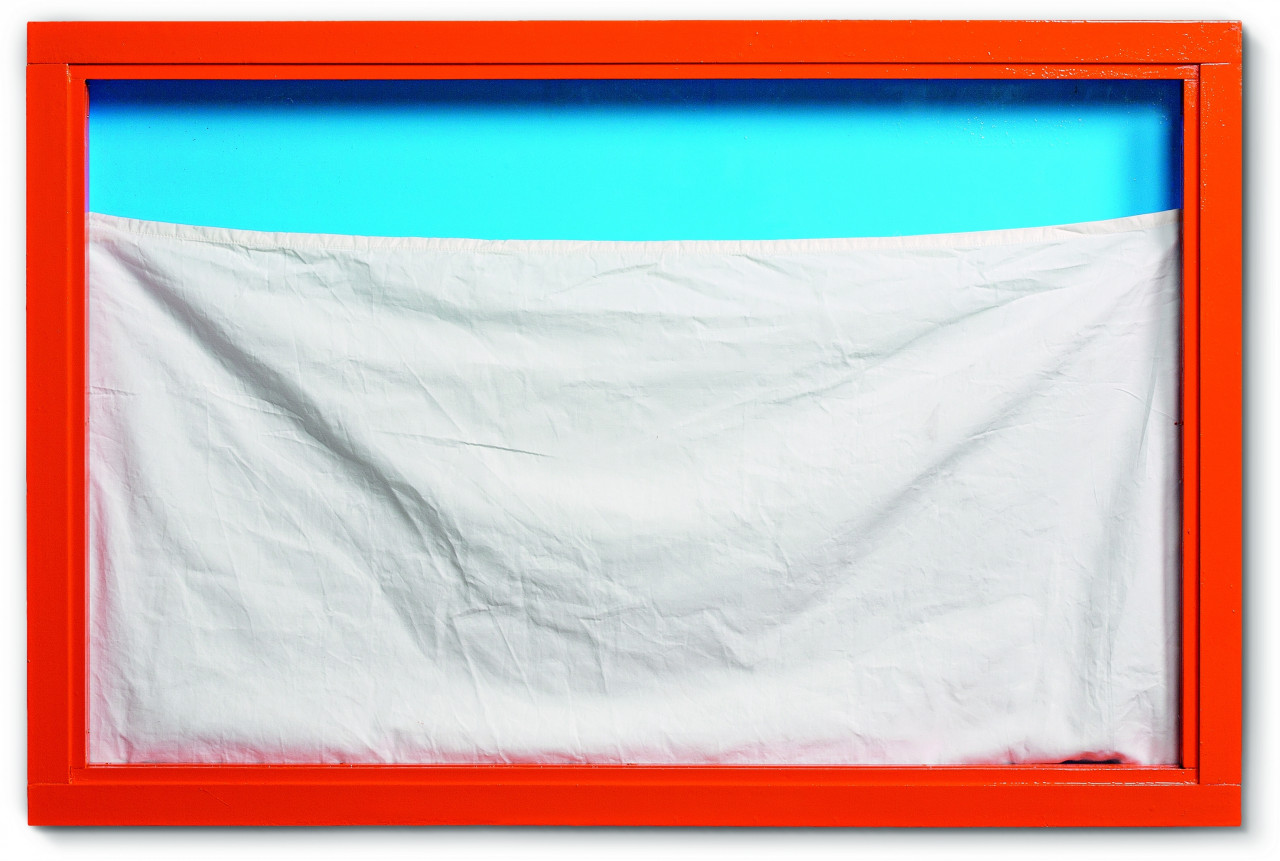
Show Window
2013
Enamel painted wooden frame, with fabric, 61 x 92 x 7.5 cm (24 x 36¼ x 3 in). Edition of 35, signed and numbered on label.
The edition Show Window is a reference to Christo's shop window and façade wrappings from the late 1960s and early 1970s. After emigrating to New York in 1964, Christo began to work with abandoned buildings, covering their glass façades with fabric and paper. The exploration of space, the tension between concealment and unveiling and the play with perception and mystery are central elements that were established in these early experiments and run through his entire oeuvre. The draped curtains set in frames are regarded as precursors to his later monumental veiling projects.
Ponte S. Angelo, Wrapped, Project for Rome
2011
Screenprint with collage of fabric and twine, hand-worked with crayon and felt-tip pen, and semi-transparent polyester-foil with masking tape. 63.5 x 72 cm (25 x 28½ in). Edition of 160 + XC + 50 A.P. + 15 H.C., signed and numbered.
In 1967, Christo and Jeanne-Claude developed the concept of covering the historic Sant'Angelo Bridge in Rome, an important structure that marks the connection between the city center and the Vatican. However, the project was not realized due to a lack of official approval. In 2011, Christo took up the original idea again and created an edition in the form of a hand-worked collage print that visualizes the planned intervention.
The work combines various media elements: a coloured photograph conveys the material transformation of the bridge, while a graphic representation of the arches and a cartographic section with handwritten annotations and measurements contextualize the architectural structure.
Surrounded Islands 1980-83
2009
From Forty Are Better Than One
7-part leporello, digital pigment print (Ditone) on 260 g Hahnemühle Baryta paper, 32 x 175 cm (12½ x 69 in). Edition: 75, signed and numbered.
Surrounded Islands, Biscayne Bay, Greater Miami, Florida, 1980-83 was a 1983 environmental artwork that saw Christo and Jeanne-Claude surround an island archipelago in Miami with pink fabric.
In 2009, the artists chose several images of the project and arranged them to create this edition that was published as part of the group project Forty Are Better Than One, as a special edition of Schellmann Art's catalogue raisonné, celebrating the gallery's 40th anniversary.
EUR 2,500
Wrapped Vespa
2009
Paper collage and digital pigment print on rag paper, with hand-made crayon additions, 31 x 31 cm (12¼ x 12¼ in). Edition of 200 (+ 30 H.C.), signed and numbered.
For this edition, Christo wrapped a Vespa in fabric, concealing its form while still keeping it recognizable. The graphic composition, complemented by a grid and notated dimensions, refers to Christo's precise working method and conceptual approach. The warm, textured brown tones of the wrapping material stand in exciting contrast to the bright red accents of the Vespa, creating a visual interplay between the hidden and the revealed. The work encourages reflection on transformation, mystery and the interrelationship between art and object.
Wrapped Bottle, Project for Kirchberg Spätlese
2001/2007
Collaged paper with digital pigment print and handmade crayon additions, 32 x 26 cm (12½ x 10½ in). Edition of 120, signed and numbered.
For this edition, Christo wrapped a Franckonian "Bocksbeutel“ wine bottle. The typical shape of the bottle remains recognizable even when wrapped, covering the brand label. We see an object with its own sculptural quality.
EUR 5,000
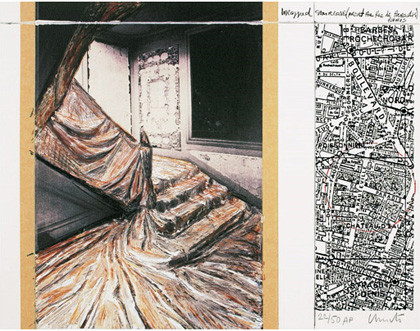
Wrapped Staircase, Project for Rue de Paradis, Paris
2001
Offset lithograph/silkscreen/collage on rag paper, 27.5 x 35.5 cm (10¾ x 14 in). Edition of 100 + 50 A.P., signed and numbered.
This edition is based on Christo's proposal for the Yvon Lambert gallery on rue de Paradis, Paris, 1972-75. Christo wrapped numerous, mostly public buildings from the outside. Only in a few cases did he wrap indoor floors, staircases or equipment.
Wrapped Statues, Sleeping Faun, Project for the Glyptothek, Munich
2000
Collotype, silkscreen, polyethylene, twine and crayon on chipboard, 81 x 57.8 cm (32 x 23 in). Edition of 100 + XXV, signed and numbered.
This edition is based on Christo's design for a project in which he envisioned wrapping the Barberini Faun, a prominent sculpture in the collection of Munich's Glyptothek. The faun is a marble sculpture of a drowsy satyr or faunus in the form of a young, muscular man, probably created around 220 BC and found in the 17th century in the moat of the Castel Sant'Angelo in Rome. As a mythical being, the figure can be recognized by a horse's tail protruding from the lower part of his back.
Running Fence, Sonoma and Marin Counties, California 1972-76
1998
From Sequences
a: Grano lithograph with collage, printed in eight colors on Fabriano rag paper;
b, c: Two heliogravures, printed in four colors on Rives BFK rag paper.
Each print 40 x 50 cm (15¾ x 19¾ in), each signed and numbered. Edition of 60 + X (Roman numbered).
The art project Running Fence by Christo and Jeanne-Claude was the result of 42 months of intensive preparation, including public hearings, legal proceedings, and a comprehensive environmental review. It was financed through the sale of preliminary studies and artworks by the artist duo. The temporary installation consisted of 160,000 m² of white nylon fabric, attached to a steel cable between 2,050 six-meter-high steel poles. The structure was anchored without concrete and secured with tension cables. After just 14 days, the fence was completely dismantled in accordance with agreements with authorities and landowners, leaving no trace in the landscape. The Running Fence crossed 14 roads as well as the town of Valley Ford and was visible over a distance of 65 km, while still allowing passage for cars, livestock, and wildlife.
This edition captures the ephemeral artwork and illustrates its conceptual and aesthetic significance within the overall work of Christo and Jeanne-Claude.
Set EUR 6,000
Wrapped Roman Sculptures
1991
Collotype, silkscreen, fabric, polyethylene, twine, pencil additions, 100 x 70 cm (39½ x 28½ in). Edition of 111, signed and numbered.
This edition represents a conceptual study for a never-realized project that envisioned the complete wrapping of the interior of the Glyptothek in Munich. As the oldest public museum in Munich and the only institution worldwide dedicated exclusively to ancient Greek and Roman sculptures, the Glyptothek embodies a long-standing tradition of art presentation. By wrapping the sculptures in fabric, Christo and Jeanne-Claude intended to challenge the established hierarchy between artwork and viewer, prompting the latter – only for a moment – to reconsider the value and significance of the concealed object.
The Curtains Project for SS74 Maremmana, Manciano, Toscana
1989
Photograph and map mounted on rag paper, with color screenprint, 38.5 x 28 cm (15¼ x 11 in). Edition of 60, signed and numbered.
Christo created this edition as a personal gift on the occasion of the wedding of Jörg Schellmann and Josephine Benecke. In reference to the location of the wedding in Manciano, Tuscany, he incorporated the regionally known road Maremmana into the work, characteristically adding a fabric-covered fence element to it. This artistic gesture alludes to his central work of wrapping and transforming landscapes.
Wrapped Payphone
1988
New York payphone (steel), wrapped in canvas, polyethylene, rope. 58 x 24.5 x 23.5 cm (23 x 10 x 9 in). Edition of 30, signed and numbered.
Created in 1988, this edition incorporates Christo and Jeanne-Claude’s signature approach of concealing familiar objects, stripping them of their utility and prompting viewers to see the everyday anew. While they are best known for their large-scale installations wrapping public buildings and monuments, in this work, the artist duo applied their distinctive style to a smaller public institution and cultural symbol of the 1980s – the now nearly obsolete payphone.
5600 m³ Package, Project for Documenta 4, Kassel
1986
From For Joseph Beuys
Collotype and silkscreen with collage (photos, tape, polyurethane and twine), on rag paper, 80 x 60 cm (31½ x 23¾ in). Edition of 90 + XXX, signed and numbered.
For documenta IV in 1968, Christo and Jeanne-Claude realized the 5,600 Cubic Meter Package, a monumental, air-filled sculpture made of synthetic fabric. Reaching a height of 85.3 meters, it set a new record and was considered their most technically demanding project to date. After carefully evaluating various locations, they chose the expansive Auepark in Kassel, Germany, to maximize the spatial impact of the installation. Scientific planning began in 1967 at the Massachusetts Institute of Technology, where the artist duo collaborated with mechanics expert Dimiter S. Zagoroff. Wind tunnel tests confirmed that the structure could flexibly respond to air currents, deform under pressure, and subsequently return to its original shape.
This edition documents the ephemeral artwork and illustrates its conceptual and aesthetic significance within the artistic practice of Christo and Jeanne-Claude.
EUR 5,500
Five Urban Projects
1985
Portfolio with five collage prints:
1 Wrapped Trees, Project for the Avenue des Champs-Elysées, Paris
2 Mein Kölner Dom, Wrapped, Project for Cologne
3 Lower Manhattan Wrapped Building, Project for New York
4 Curtains for La Rotonda, Project for Milan
5 Ponte S. Angelo, Wrapped, Project for Rome.
Photographs mounted on Arches 270g rag paper, with collotype, silkscreen and collage of fabric, polyethylene, twine and masking tape; pencil and felt marker additions. Prints 35.5 x 28 cm (14 x 11 in). Edition: 100 + 20 A.P. + XX A.P. + 5 P.P., each signed and numbered.
Christo was always particularly interested in public spaces, nature, streets, and buildings. Due to the complex difficulties in obtaining permits for his plans, many projects were never realized or only decades later. When we asked Christo for a portfolio of urban projects, he put together some unrealized projects. The prints show an unusual, fascinating view of urban landscapes that, perhaps with the exception of Milan, are part of our collective visual repertoire.
Package on Carozza, Wrapped Automobile (Volvo)
1984
Two lithographs on Arches Cover White mounted on museum board, with collage of fabric and twine, 56.5 x 71 cm (22¼ x 28 in). Edition of 100 + XX + 20 A.P., signed and numbered.
Available as a set or individually.
The two collages of this edition by Christo depict a historical as well as a contemporary vehicle, both covered. The partial wrapping interrupts our usual view of these everyday means of transportation and evokes a change in our viewing habits.
Wrapped Floors
1983
Lithograph on Arches Cover White mounted on museum board, with collage of hand painted cloth and brown wrapping paper, staples, 57 x 72 cm (22½ x 28½ in). Edition: 100 + XXV + 20 A.P., signed, numbered.
This edition depicts Christo’s Wrapped Floors, Project for Haus Lange Museum. By covering the windows with wrapping paper and draping the floors in lavish folds of fabric, he transformed the sober interior of the building designed by Mies van der Rohe in the 1920s into a new beauty of silence and emptiness that could be reminiscent of de Chirico’s mute aesthetic.
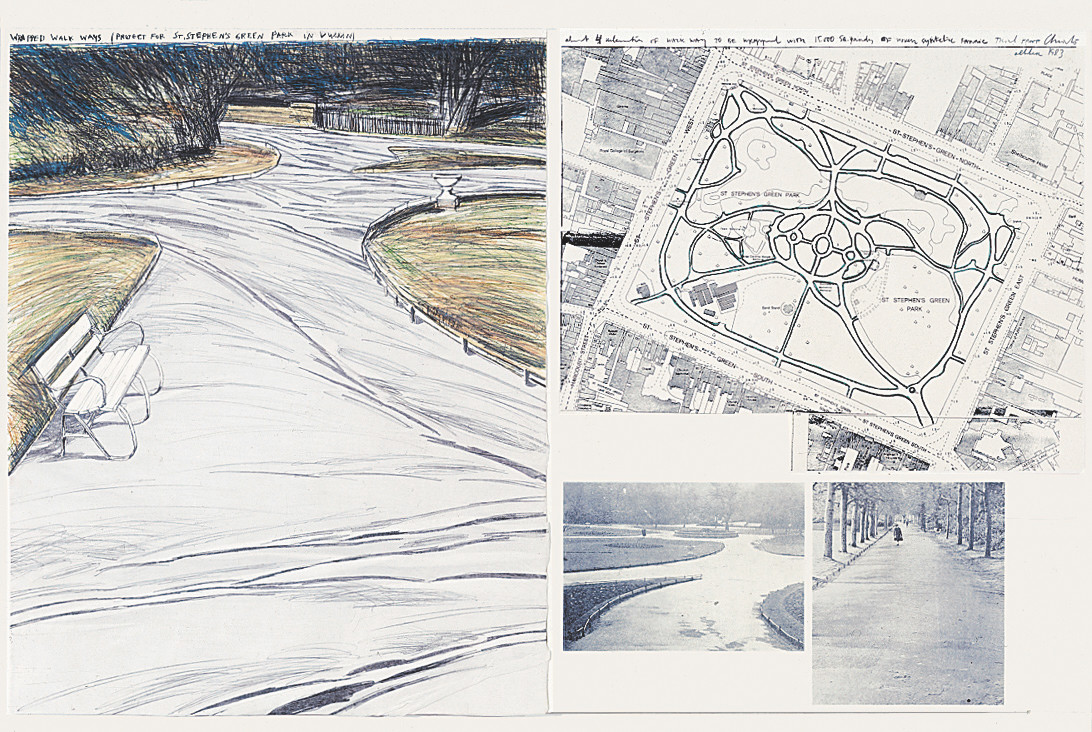
Wrapped Walk Ways
1983
Lithograph on Arches Cover White mounted on museum board, with collage of white cloth, 71 x 112 cm (28 x 44 in). Edition of 100 + XXV + 20 A.P., signed and numbered.
This edition is based on Christo’s proposal for St. Stephen’s Green Park in Dublin, Ireland.
Christo and Jeanne-Claude’s journey to Asia in 1969 heightened their awareness of the ceremonial significance of designed landscapes and the conscious perception of ground surfaces in public spaces. These impressions led to the conception of Wrapped Walk Ways, a project originally intended to connect parks in Japan and the Netherlands but ultimately left unrealized due to a lack of permits. Further attempts to implement the concept in Boston in 1971 and Dublin in 1976 also failed due to regulatory restrictions. Nevertheless, the idea of wrapped walkways remained a central theme in the artists' work, reflecting their ongoing interest in transforming urban and natural spaces.
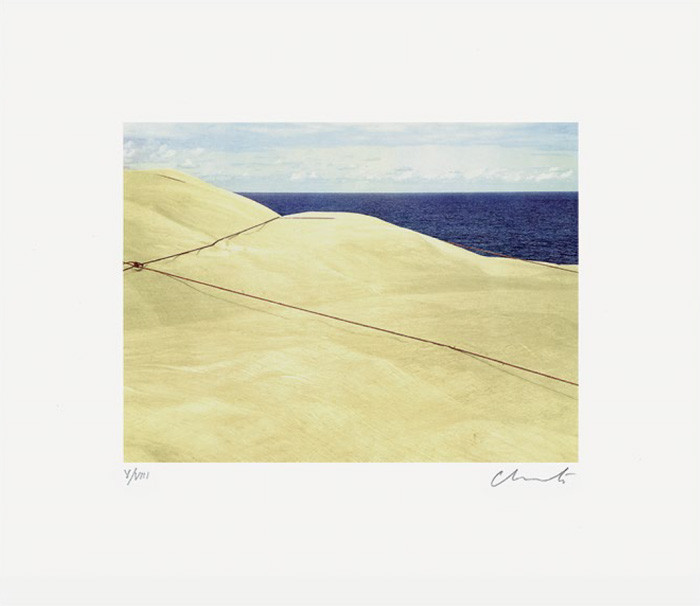
Wrapped Coast, Little Bay, Australia, 1968-69
1975
From Landscapes
Collotype/silkscreen on cardstock, 33 x 40 cm (13 x 17¼ in). Edition: 55, signed and numbered.
This edition revisits Christo and Jeanne-Claude’s groundbreaking project Wrapped Coast, realized near Sydney in 1968-69. For this monumental work, the artists wrapped 2.4 kilometers of coastline and cliffs in fabric, transforming a natural landscape into a temporary work of art on an unprecedented scale. The 1975 edition captures both the physical presence of the project and the radical spirit of their practice, in which everyday environments were reimagined through monumental interventions. Published as part of the group portfolio Landscapes, the work reflects the artists’ enduring fascination with the relationship between nature, ephemerality, and human imagination.
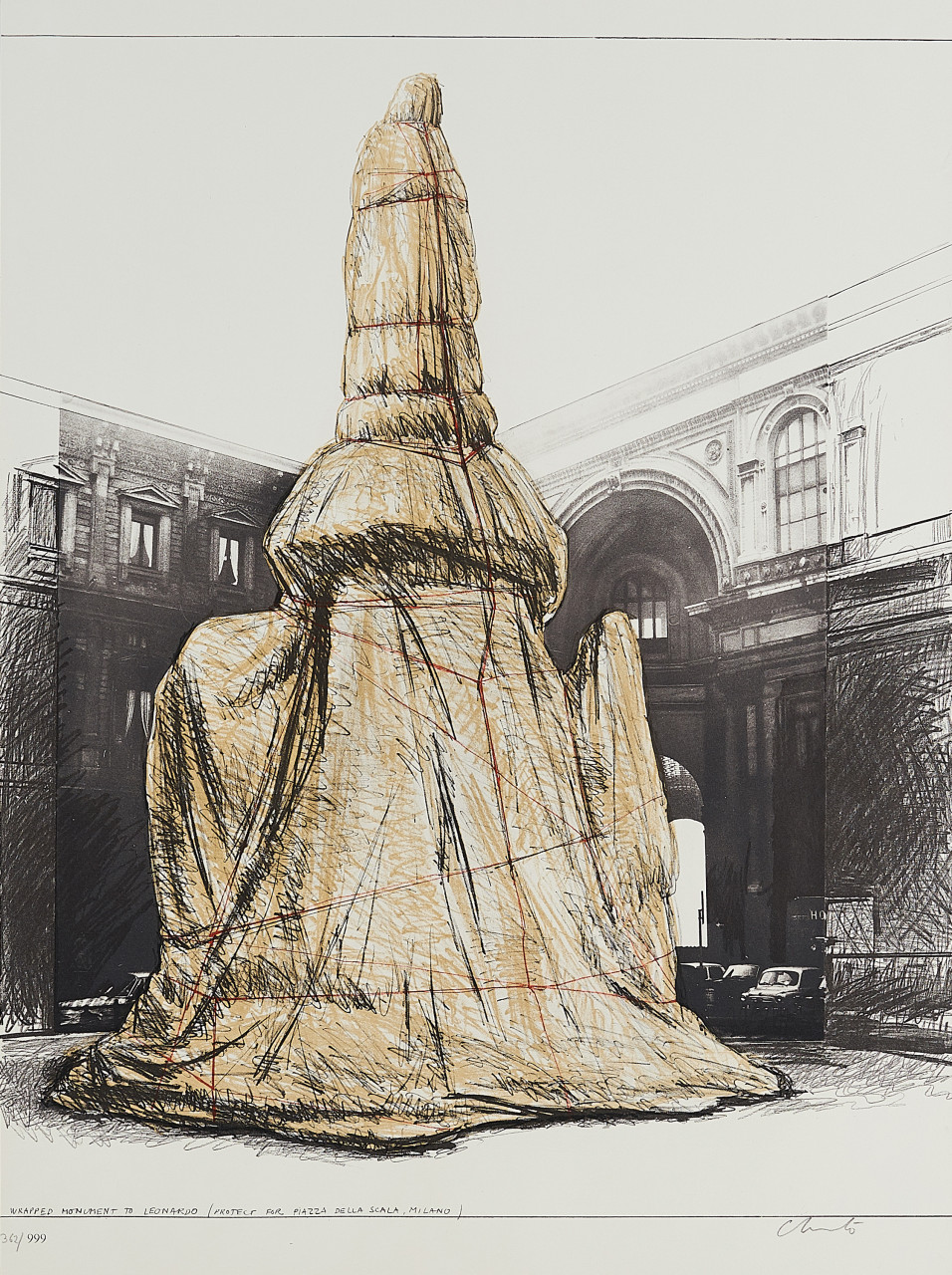
Wrapped Monument to Leonardo, Project for Piazza della Scala, Milan
1971
Color lithograph and collotype, 74.5 x 55.5 cm (29¼ x 22¾ in). Edition of 999, signed and numbered.
Schellmann 41
In the fall of 1970, Christo and Jeanne-Claude wrapped the monument to the king of Italy Vittorio Emanuele II on Piazza del Duomo, and the monument to Leonardo da Vinci on Piazza della Scala with polypropylene fabric and red polypropylene rope. The fabric had been sewn beforehand according to patterns allowing ample folds, amplifying the monumental effect of the statues. The simultaneous wrapping of both monuments emphasized their spatial relationship within the urban structure: from the center of the Galleria, they were visible at opposite ends of the historic passage. While the wrapped equestrian statue of Vittorio Emanuele II towered in front of the late 14th-century Gothic cathedral, the wrapped monument of Leonardo da Vinci formed a contrast to the neoclassical facade of the Teatro alla Scala and the adjacent town hall.
This edition here depicts the wrapping of Leonardo da Vinci’s monument on Piazza della Scala.
EUR 1,200
